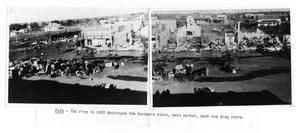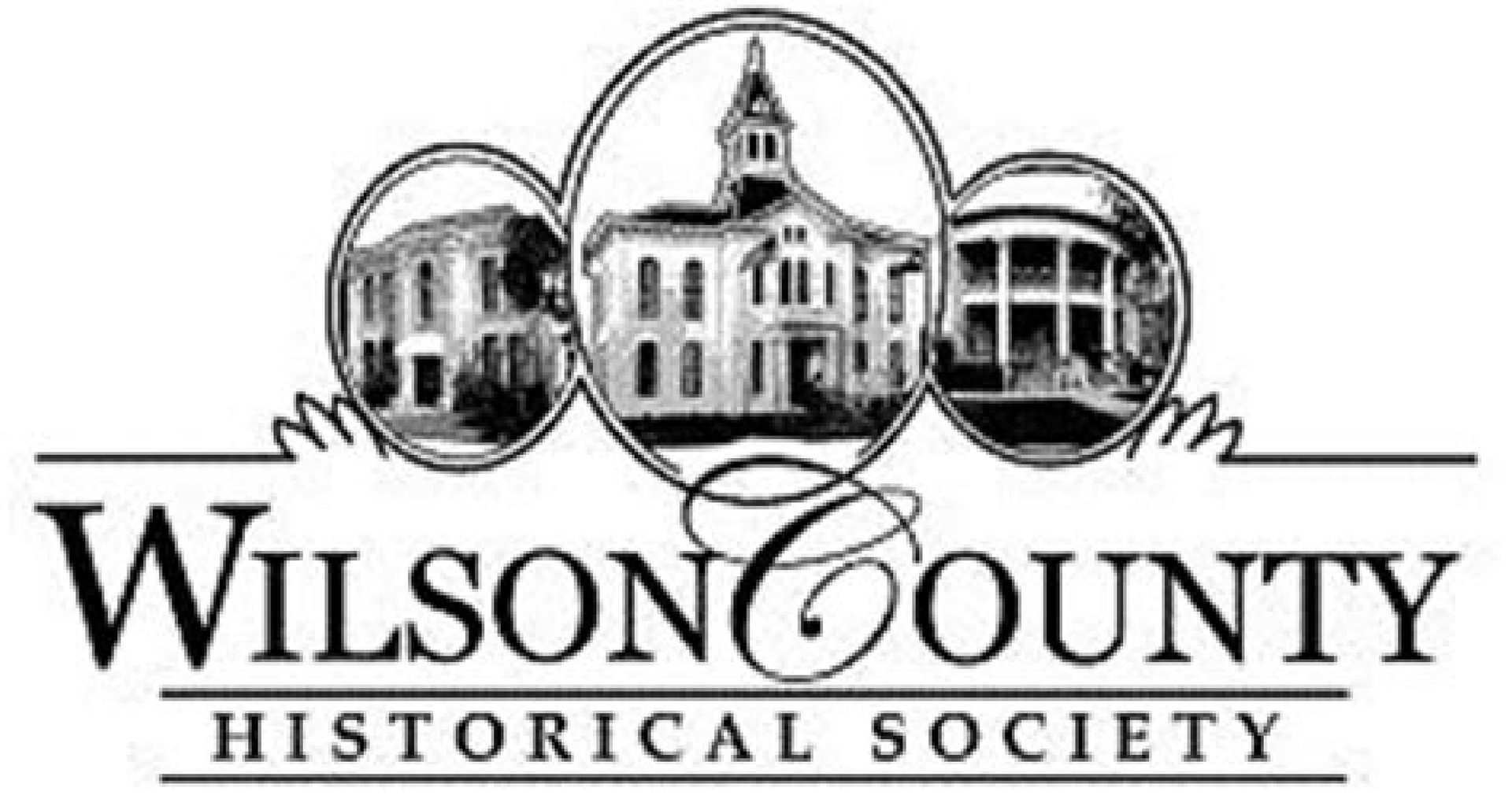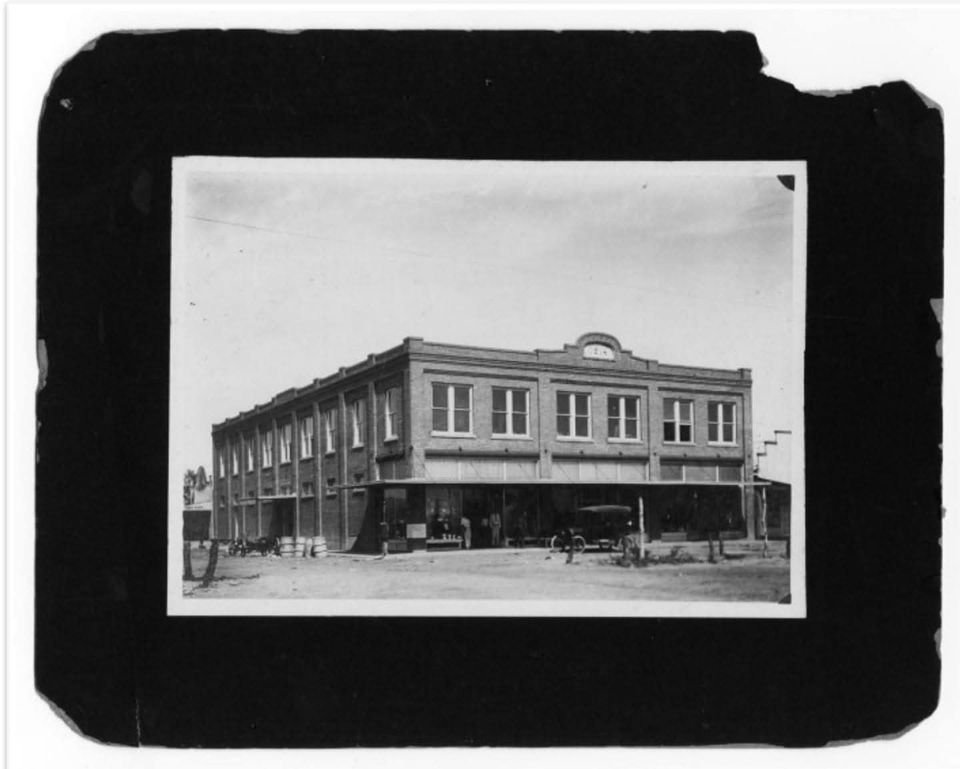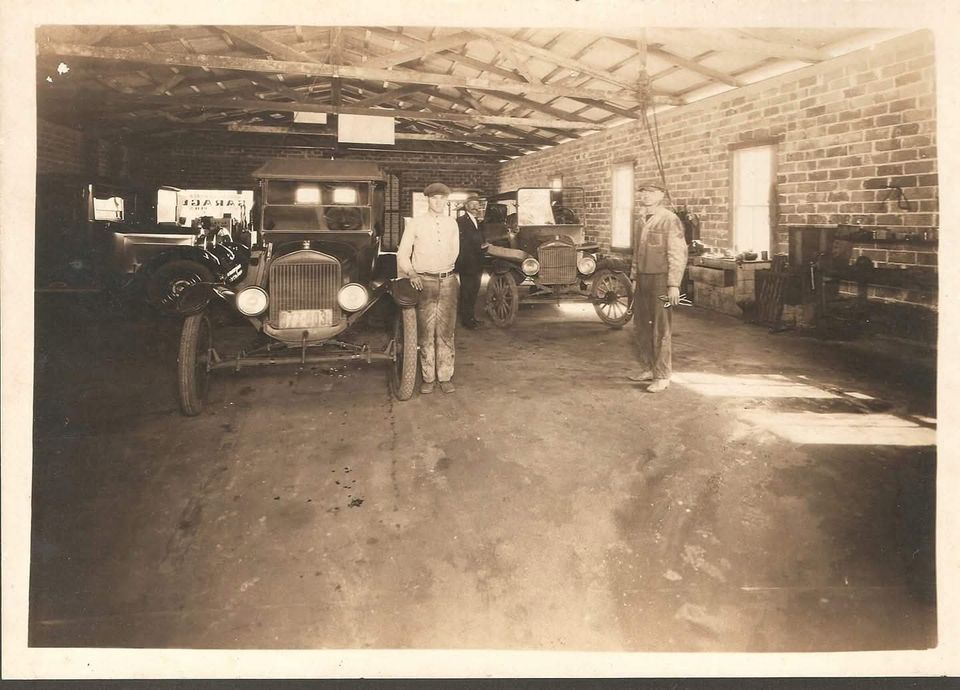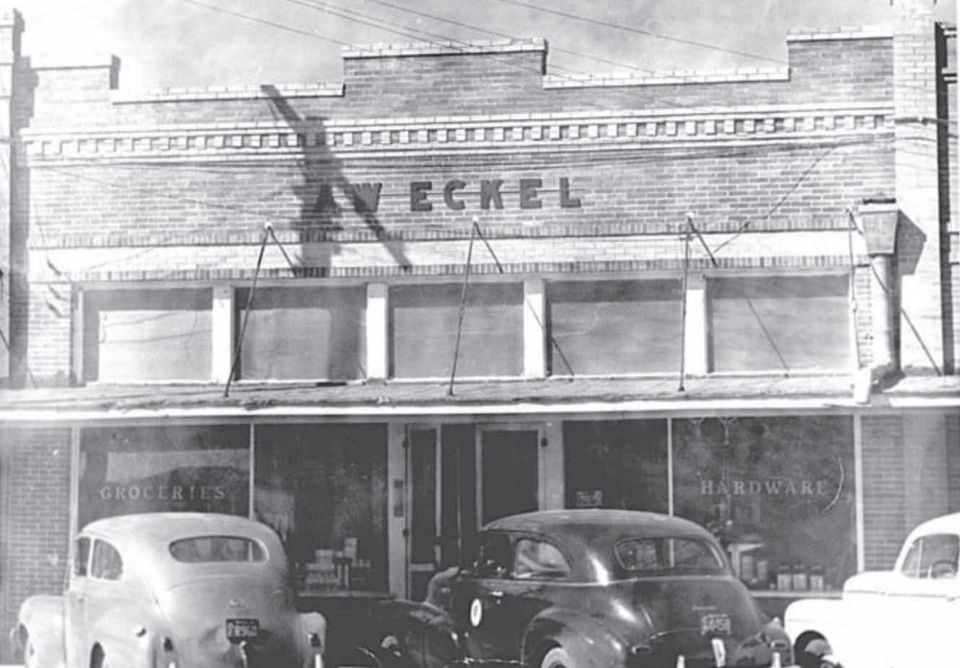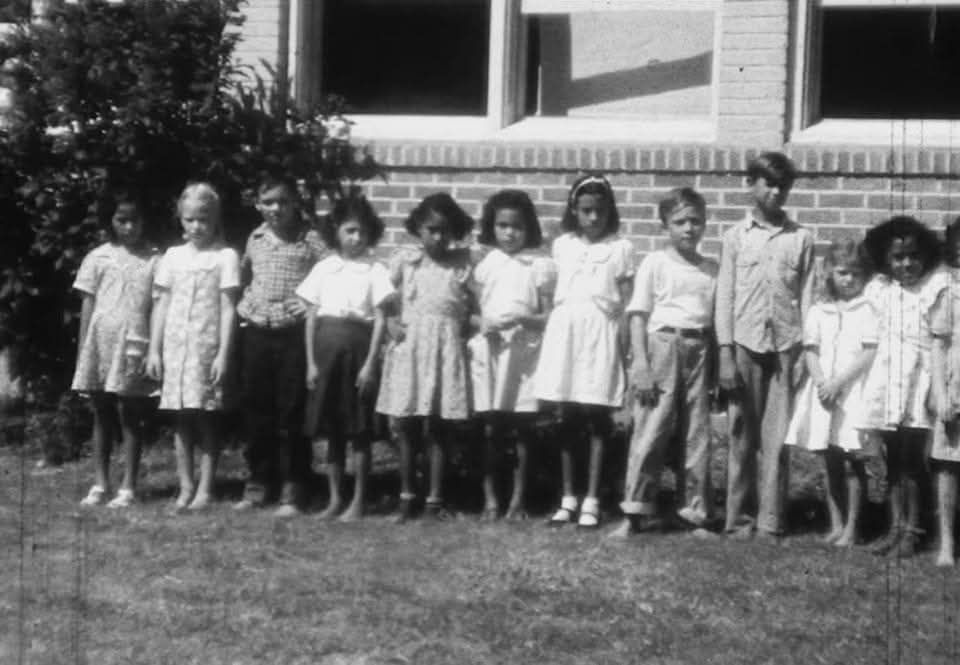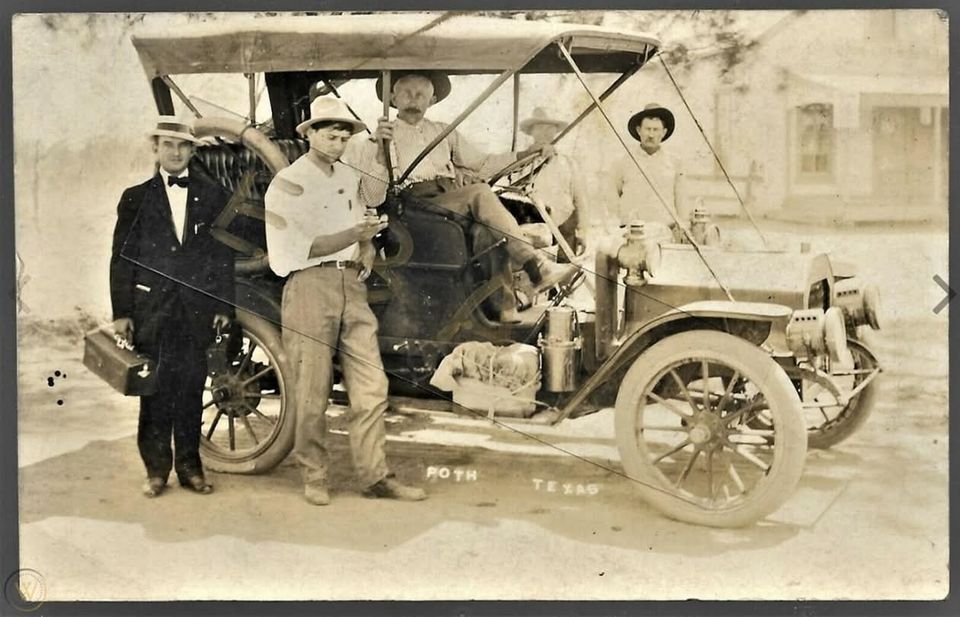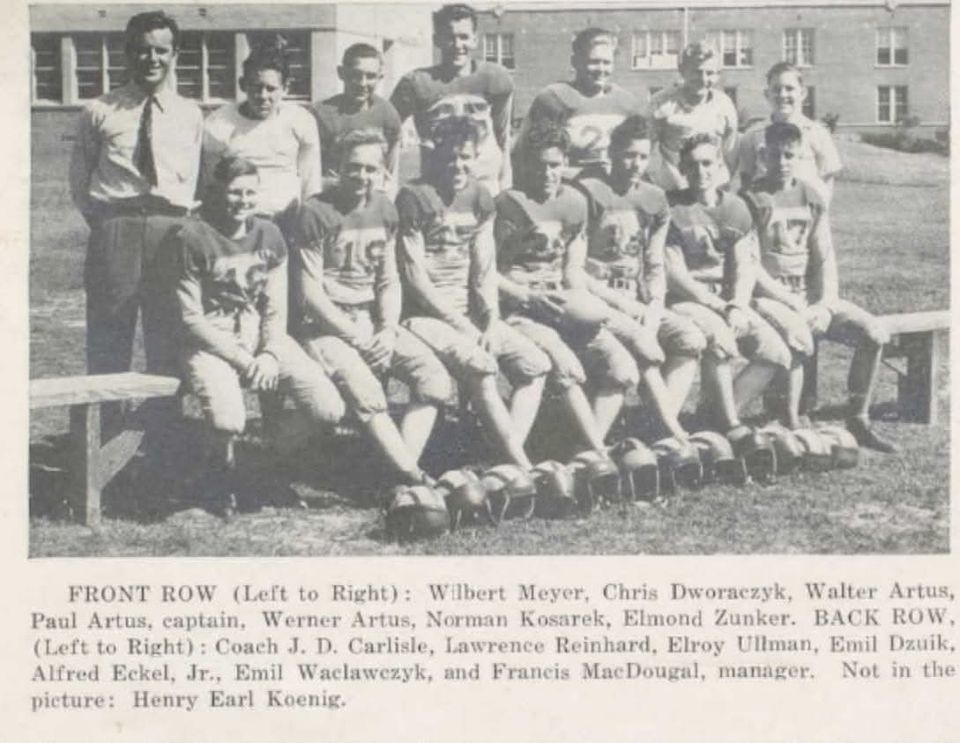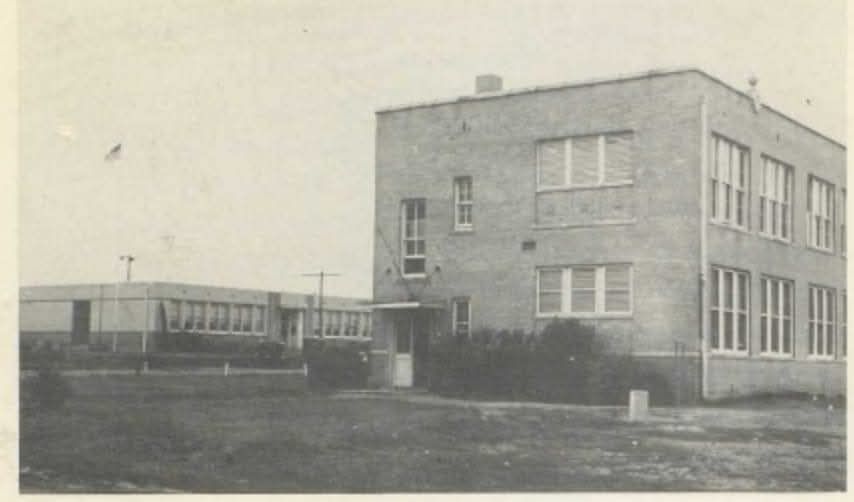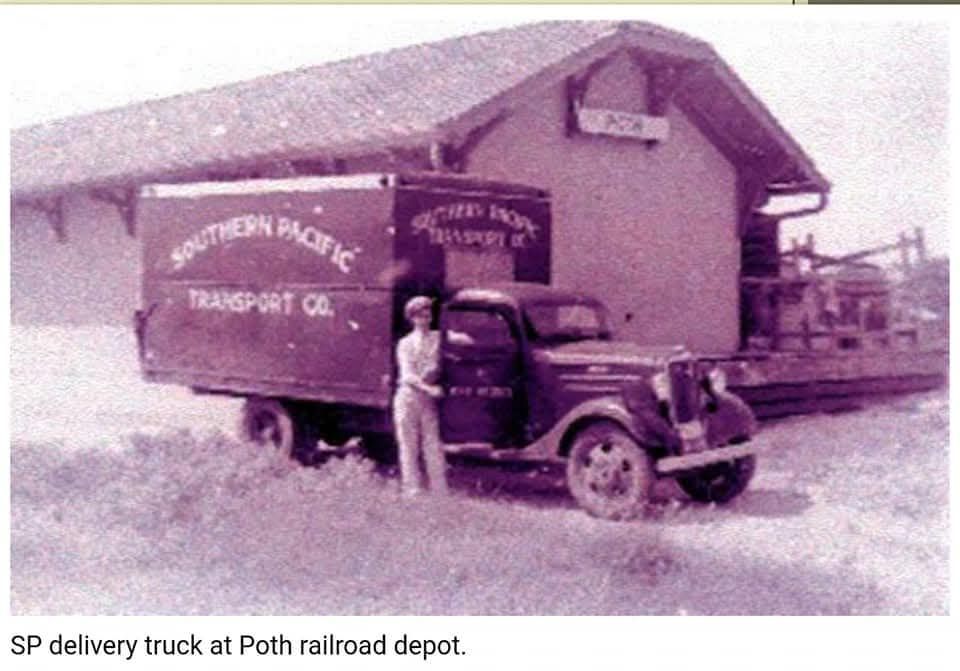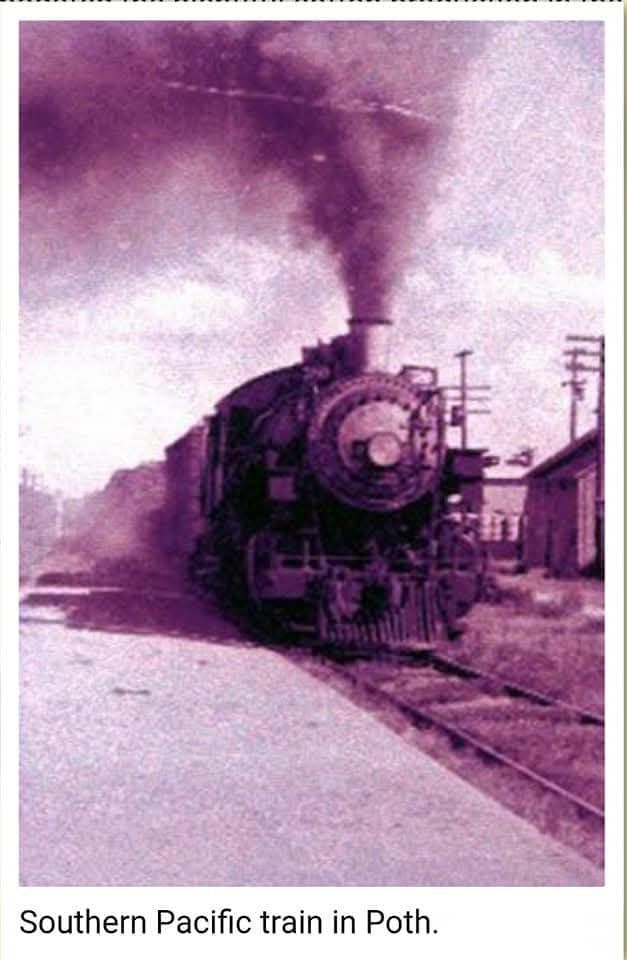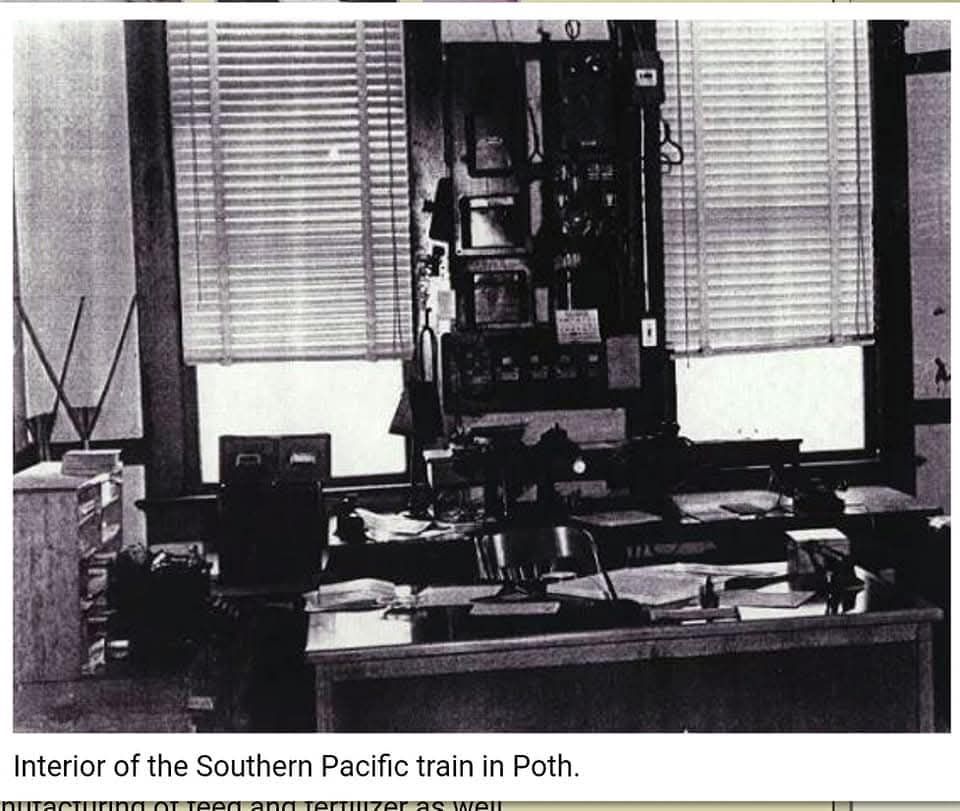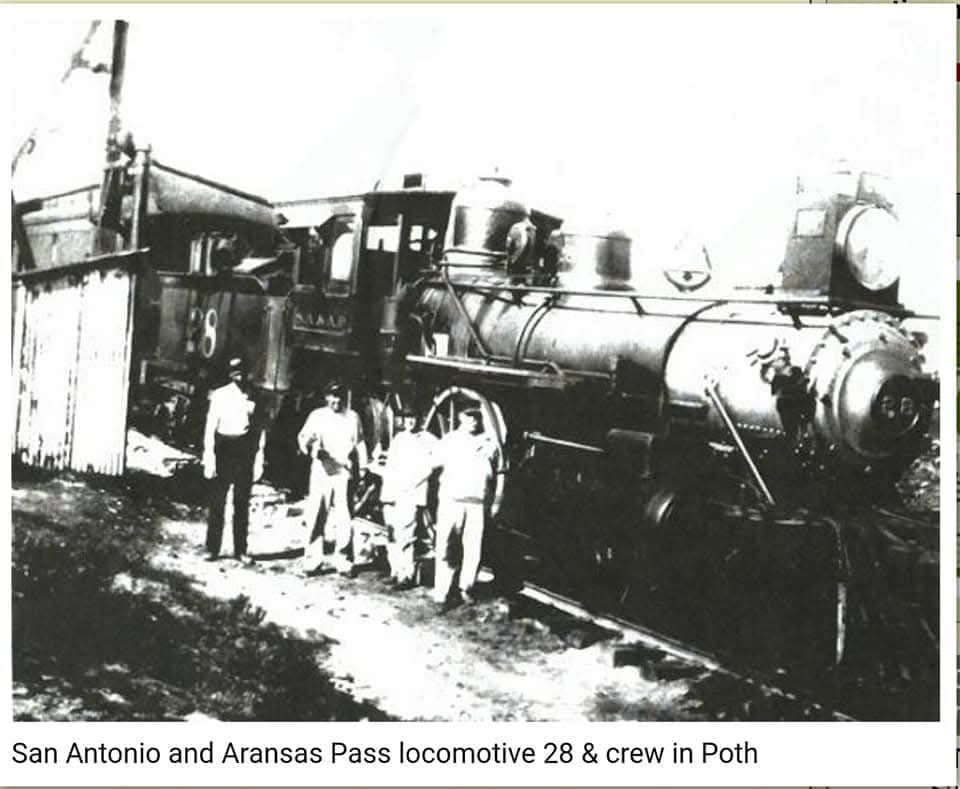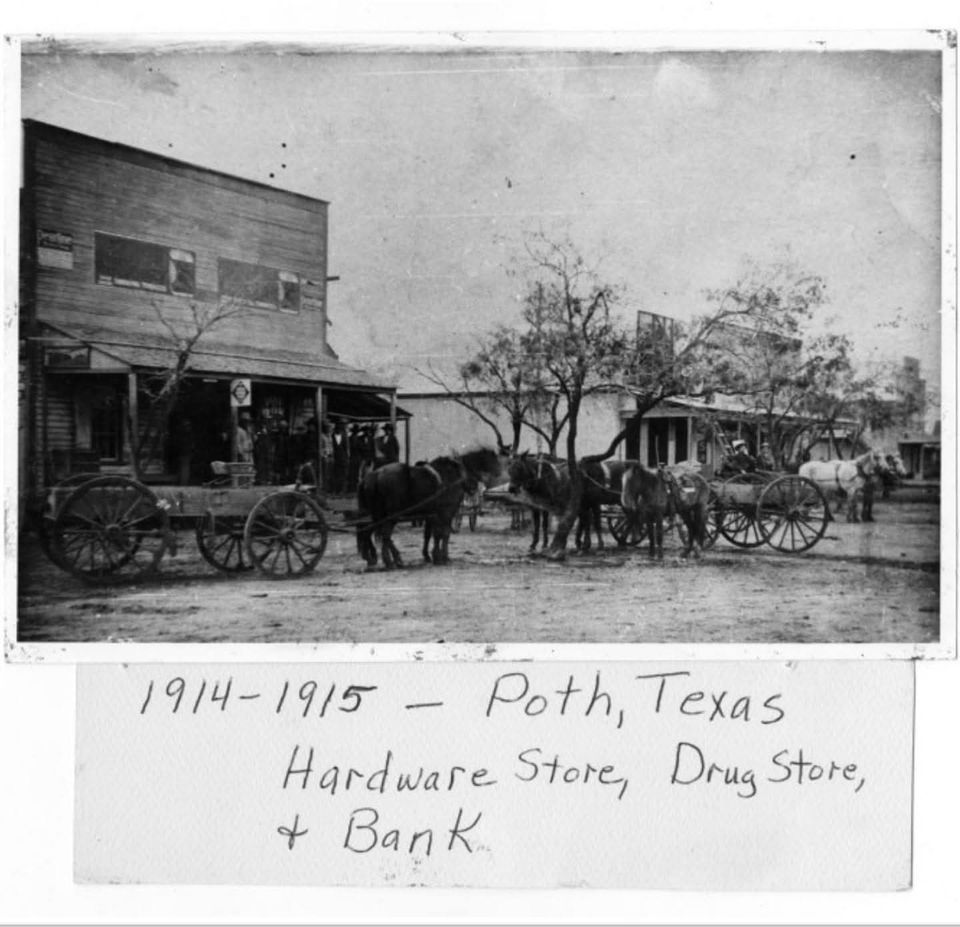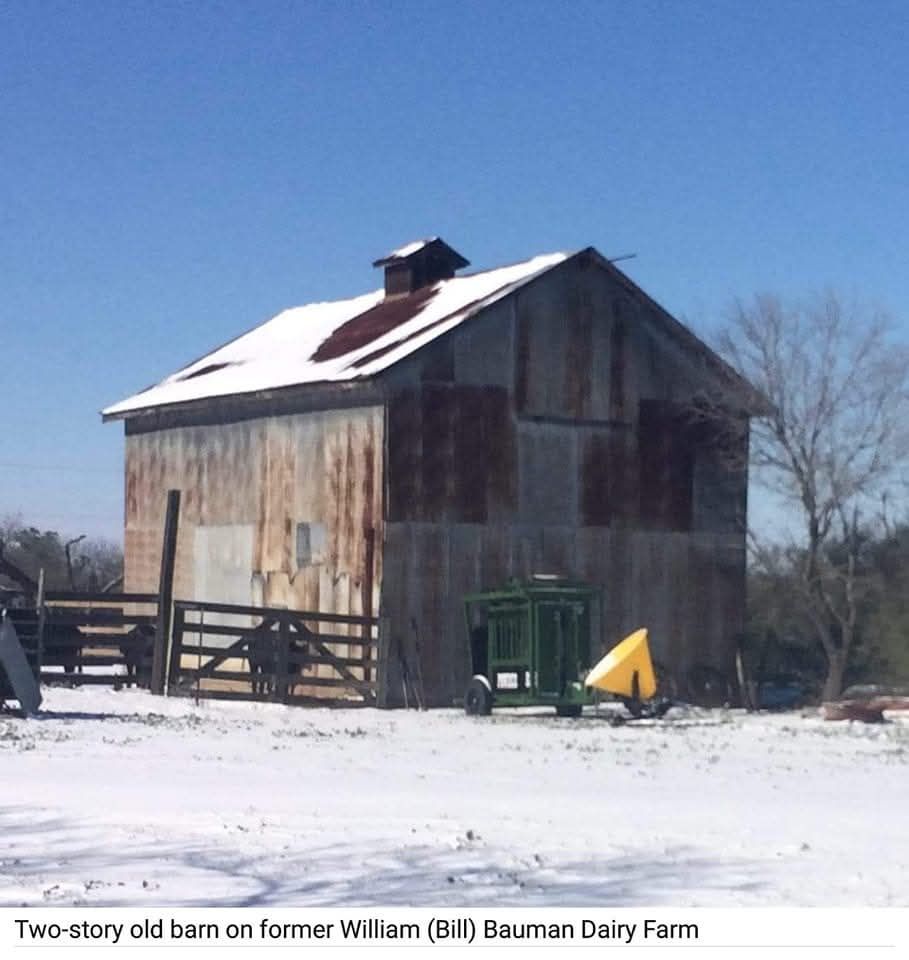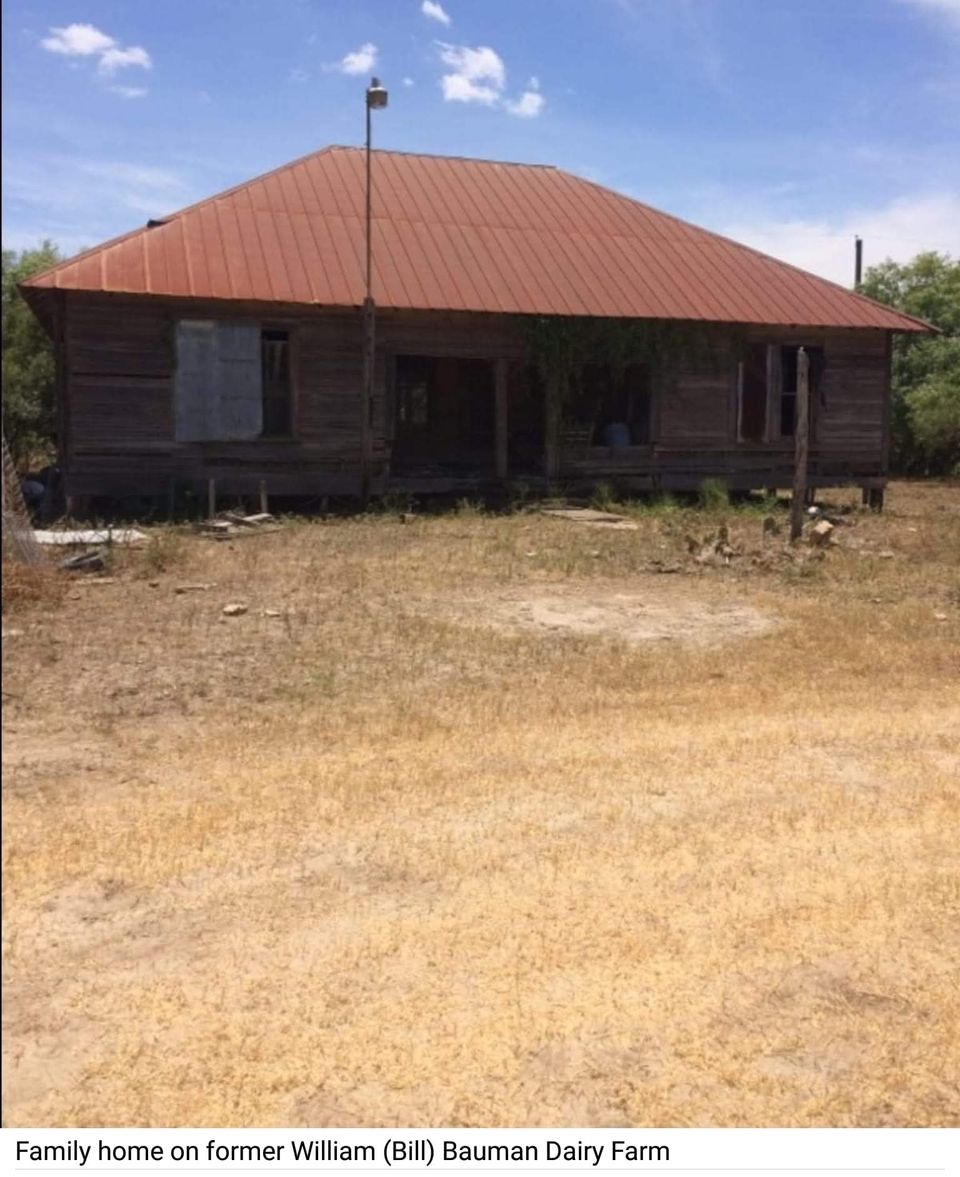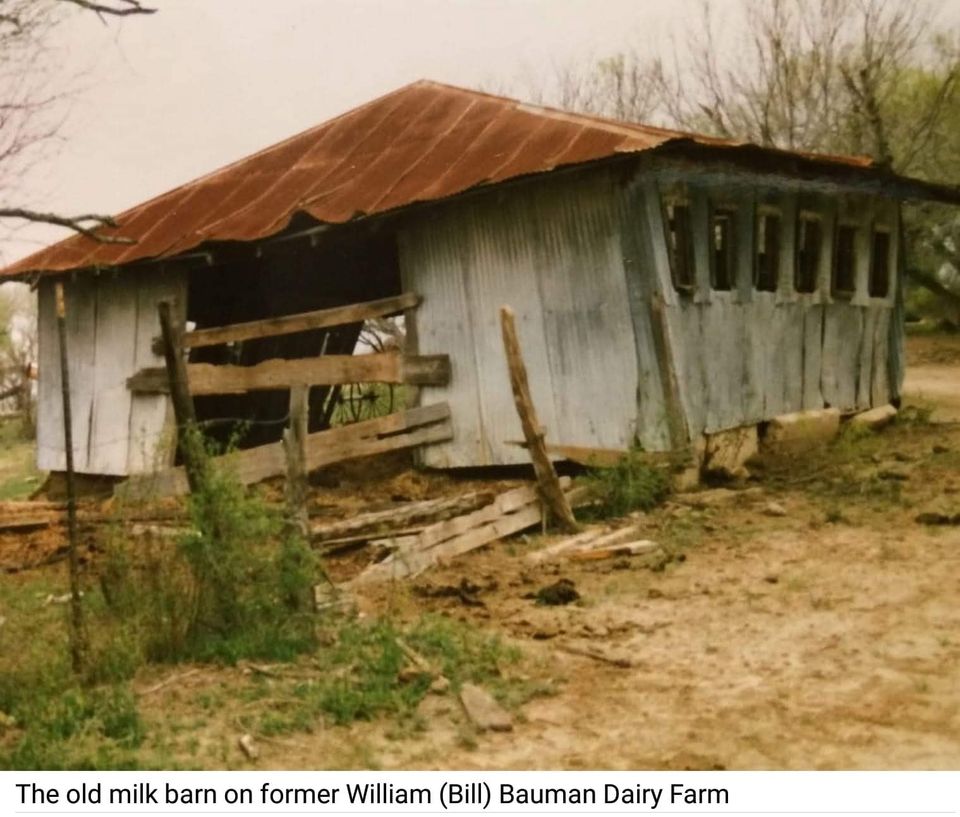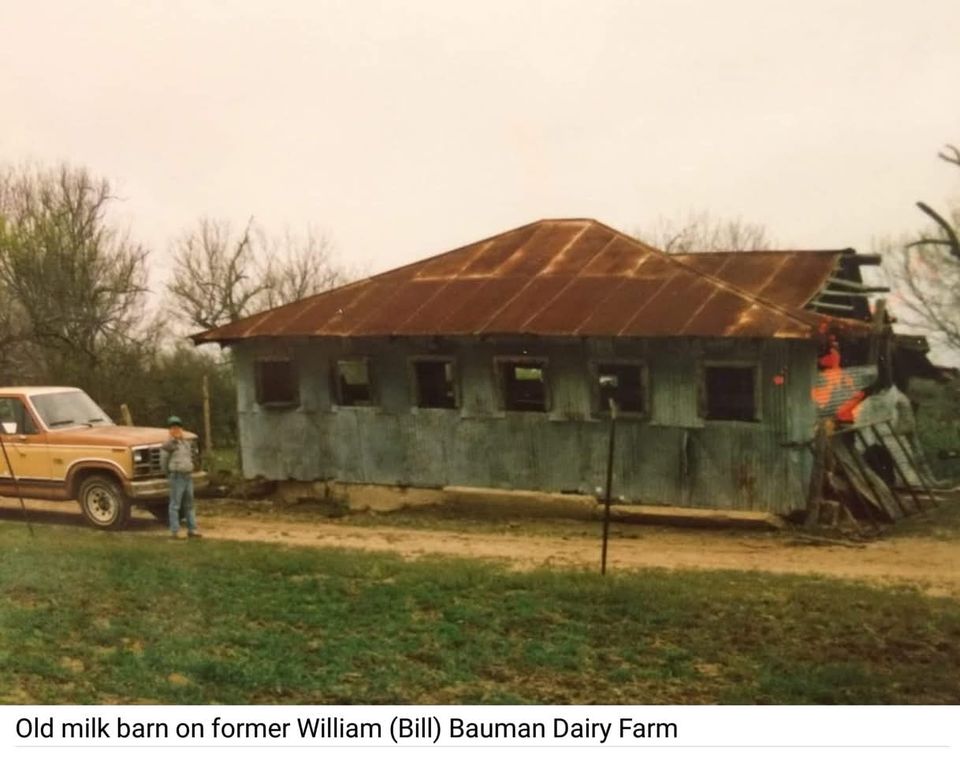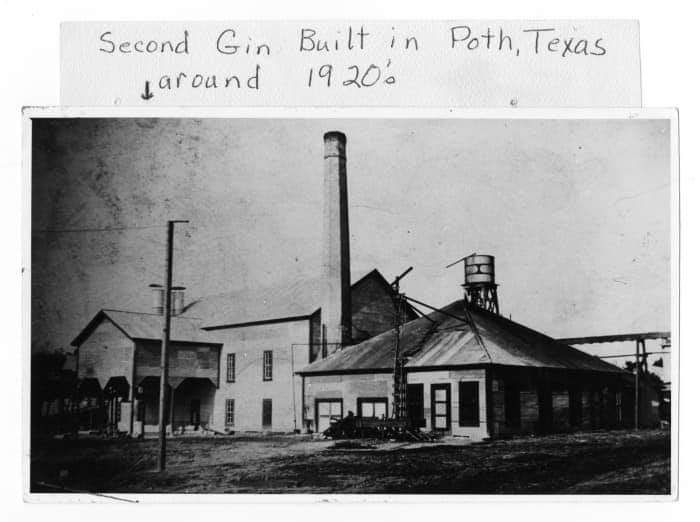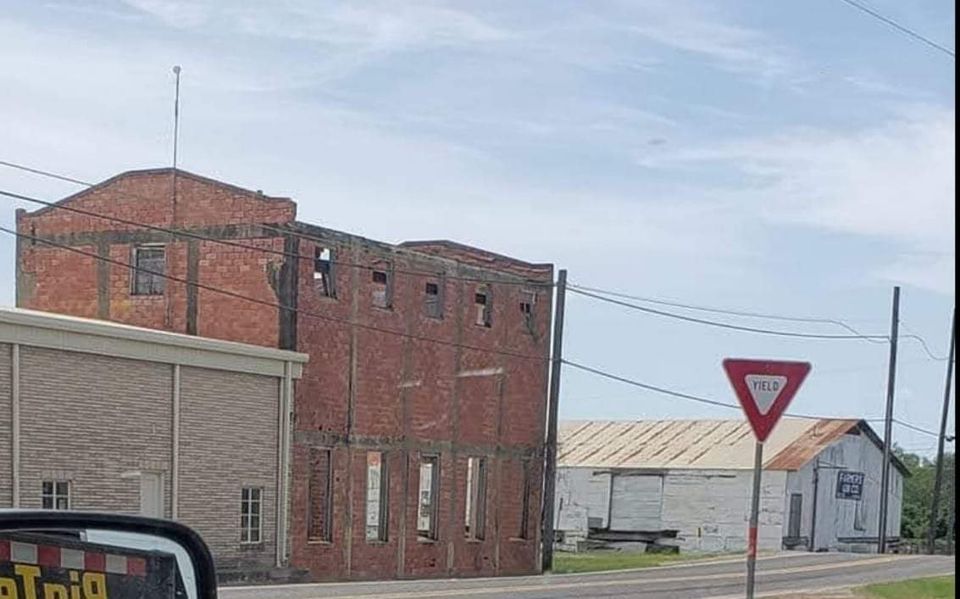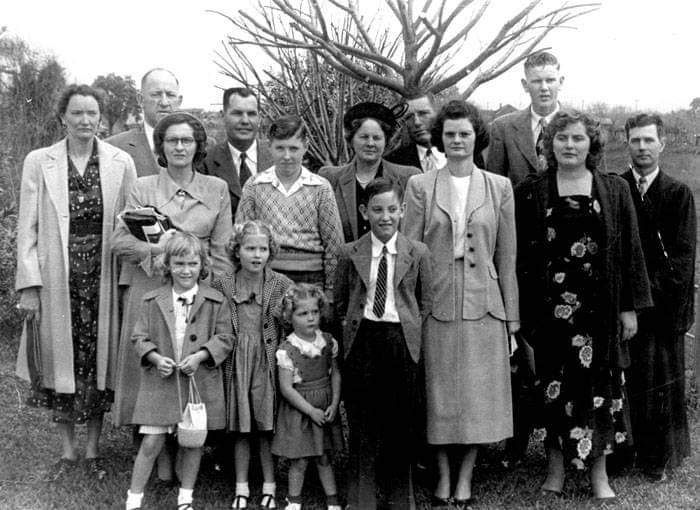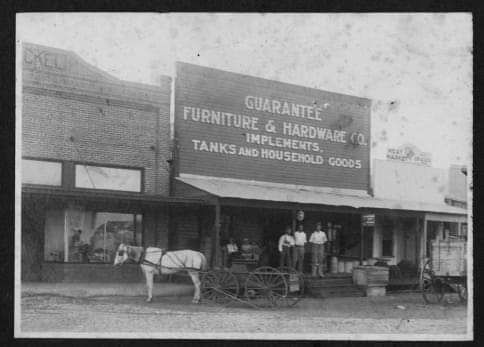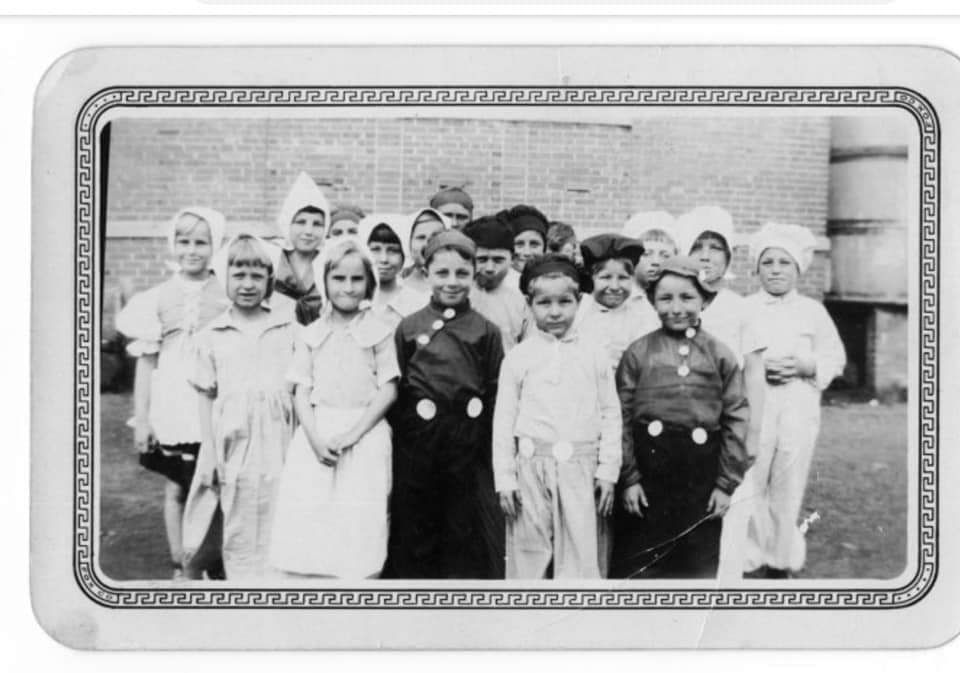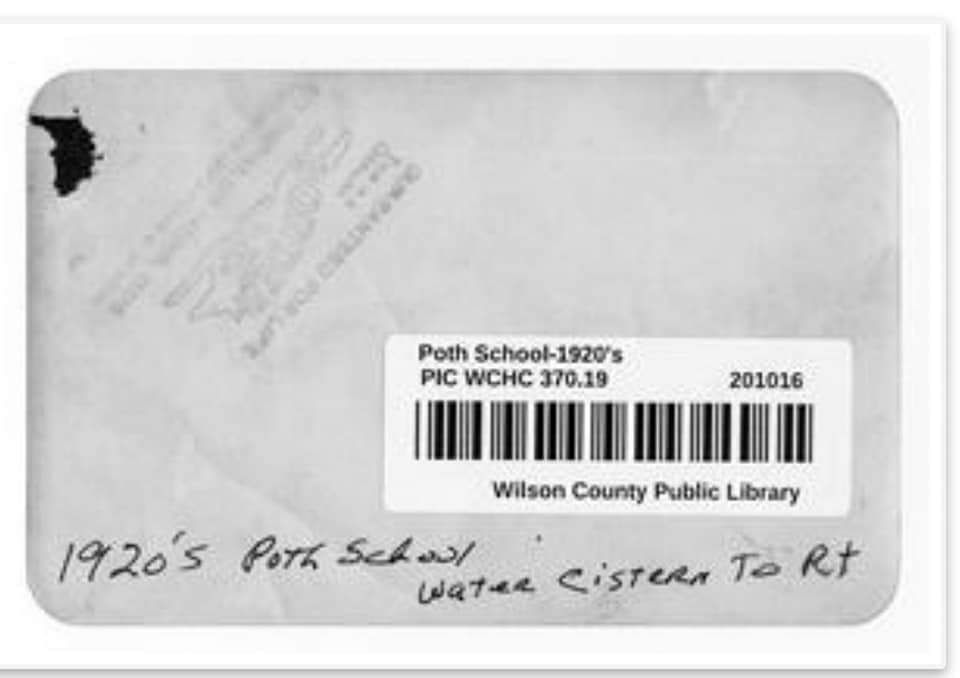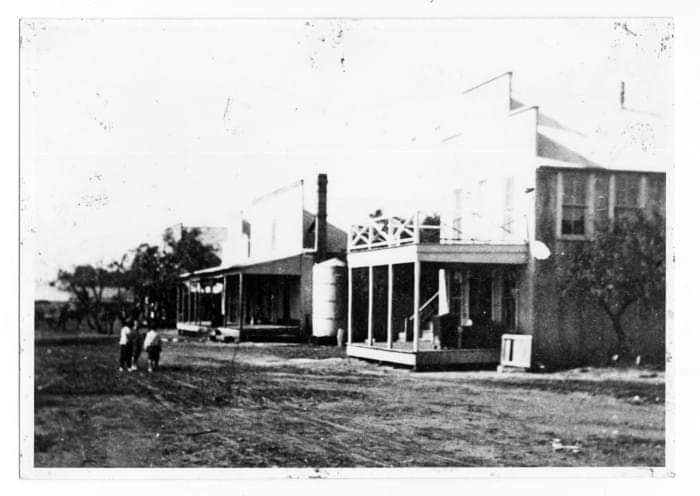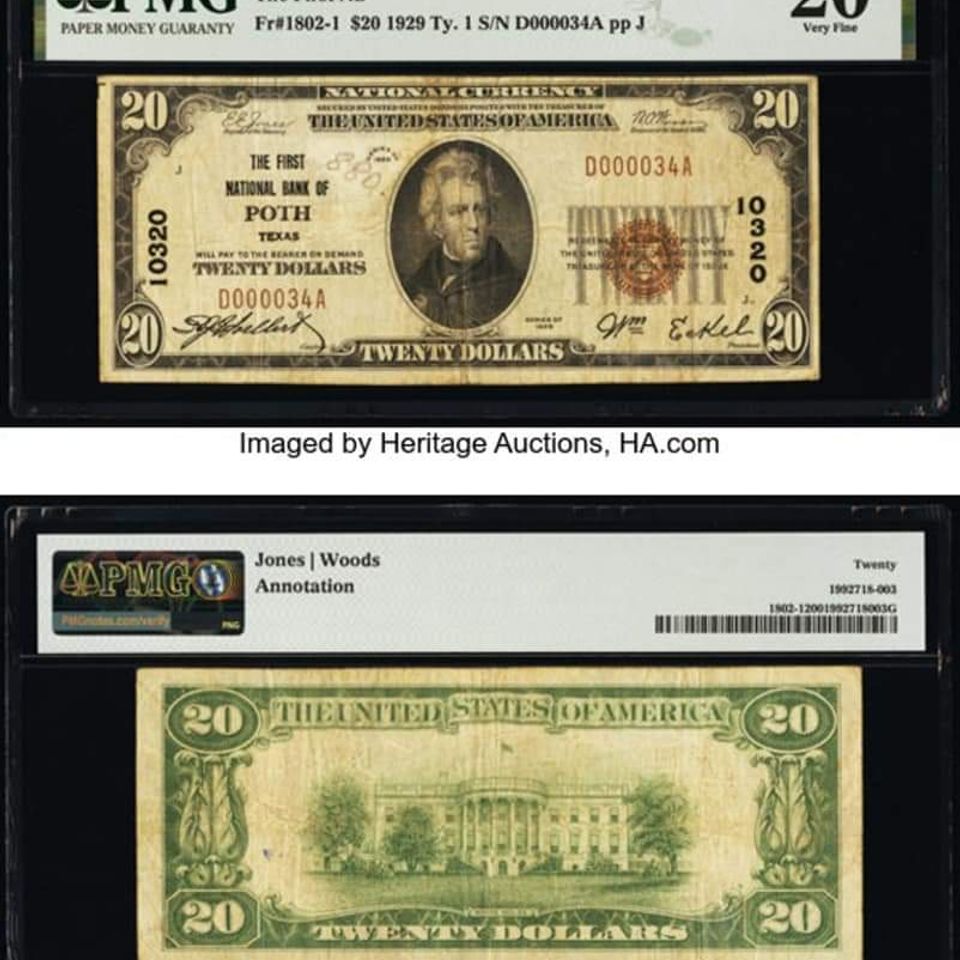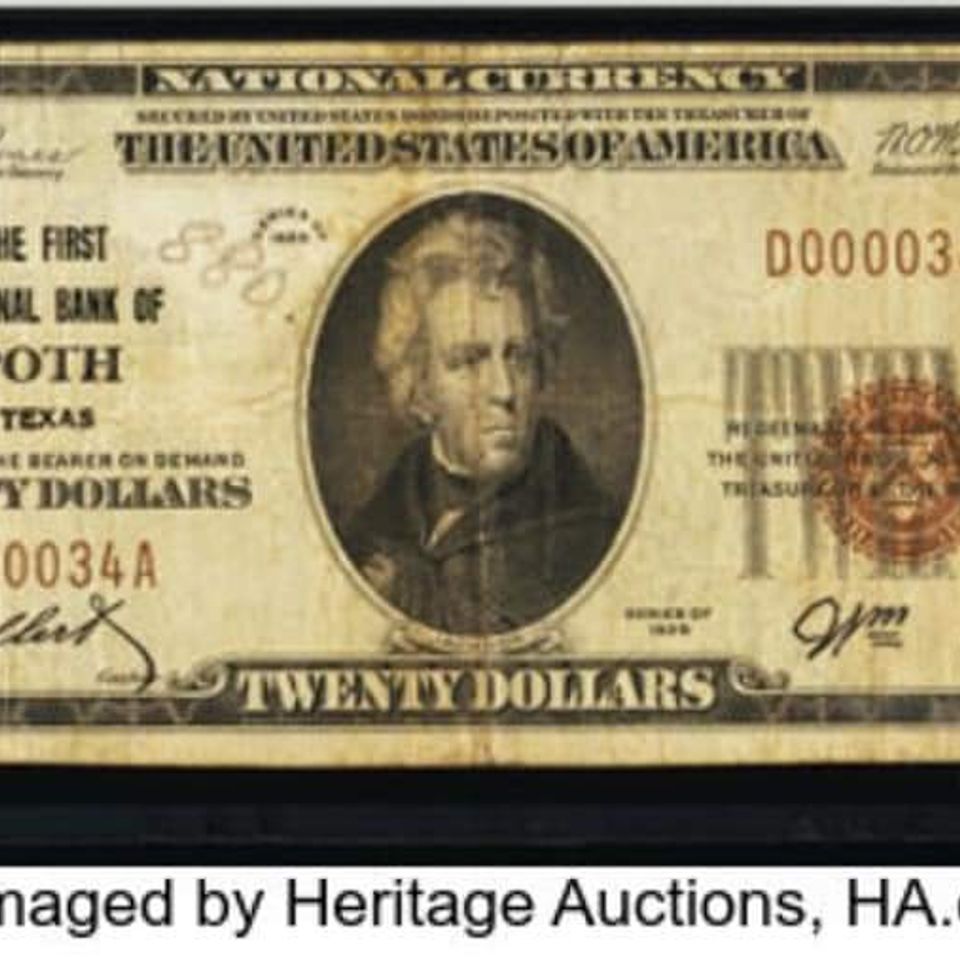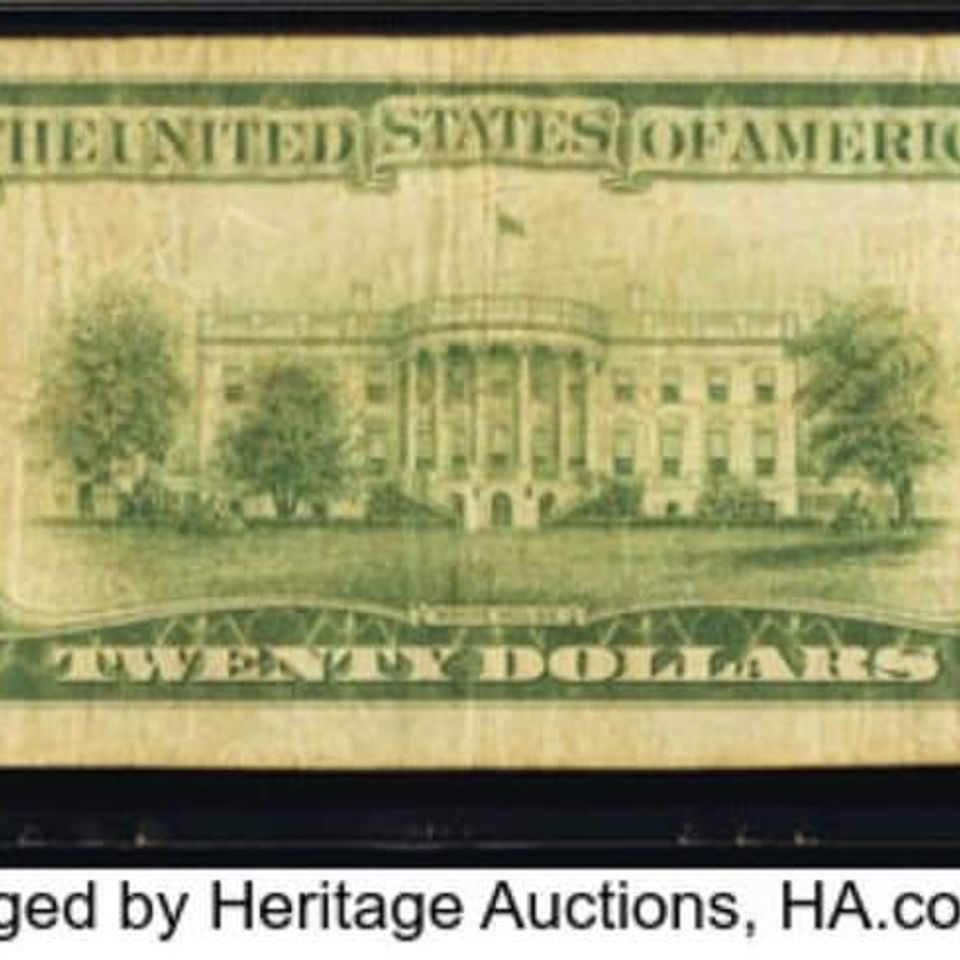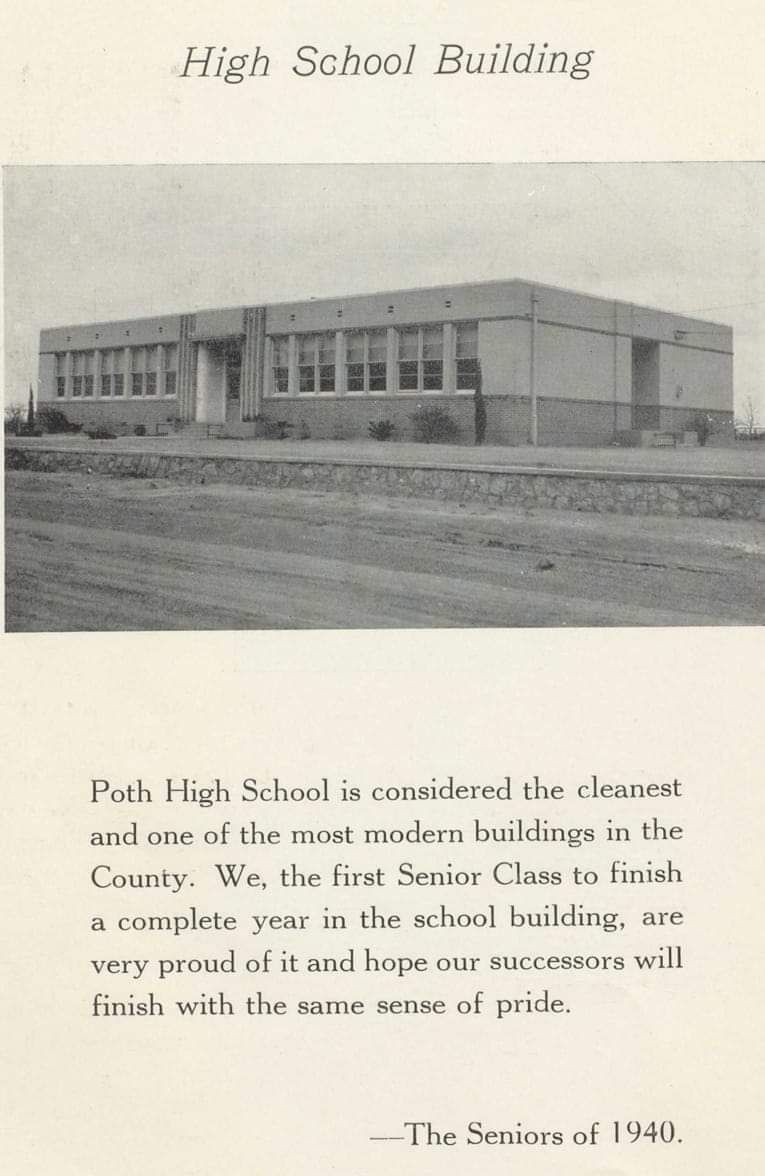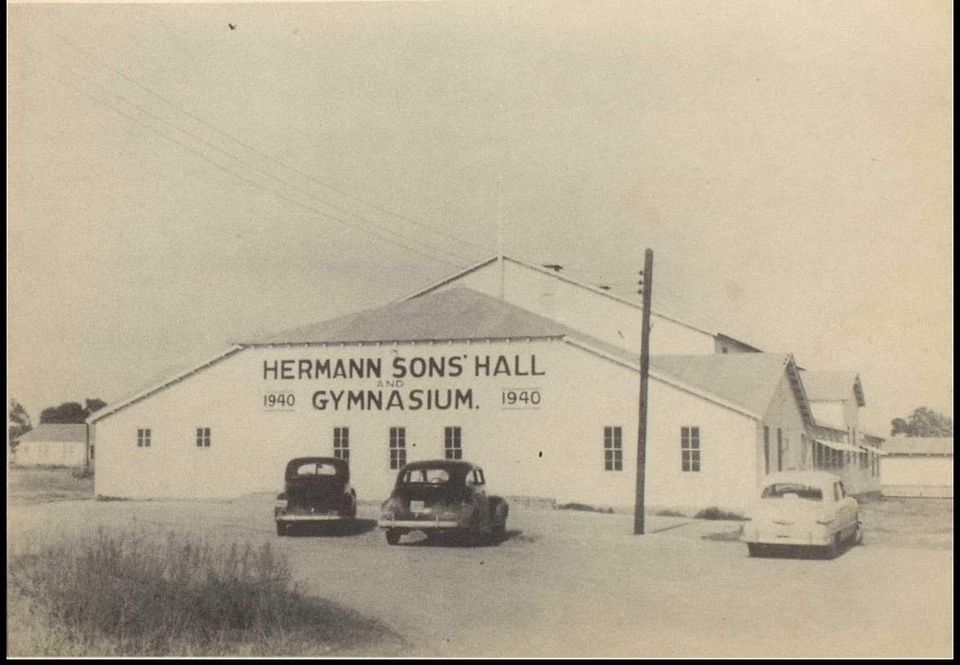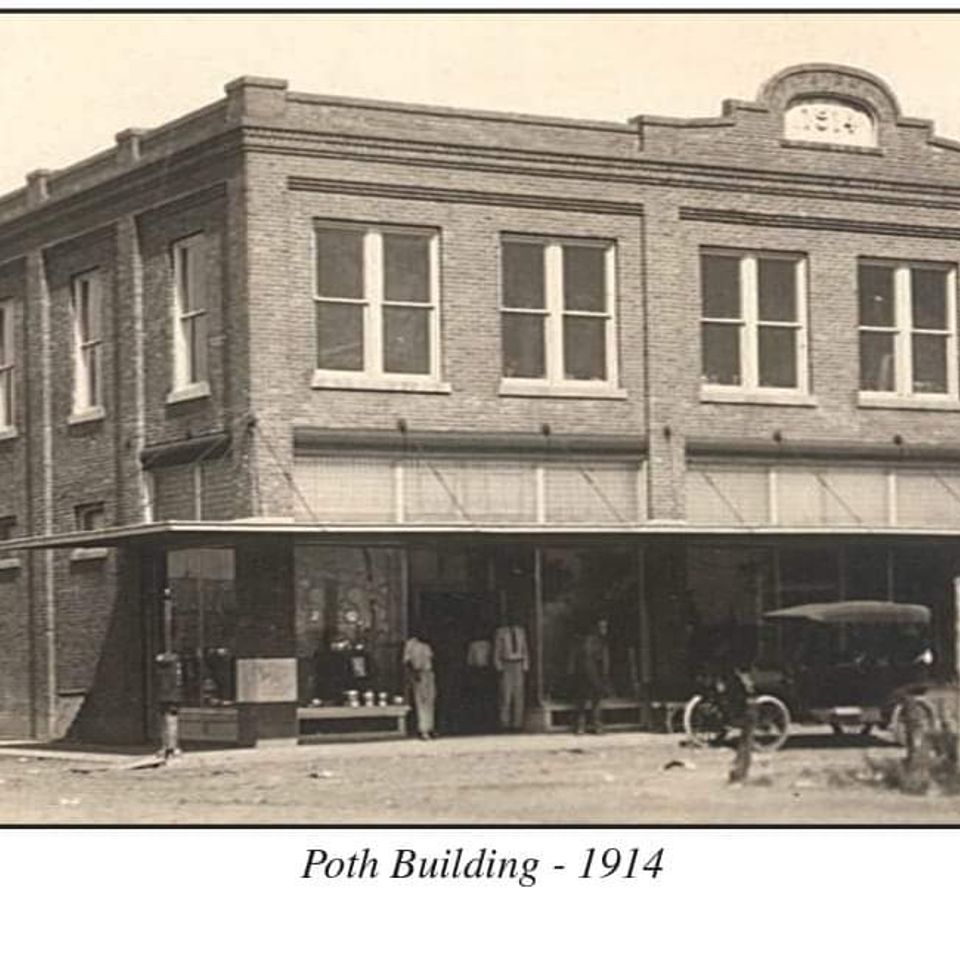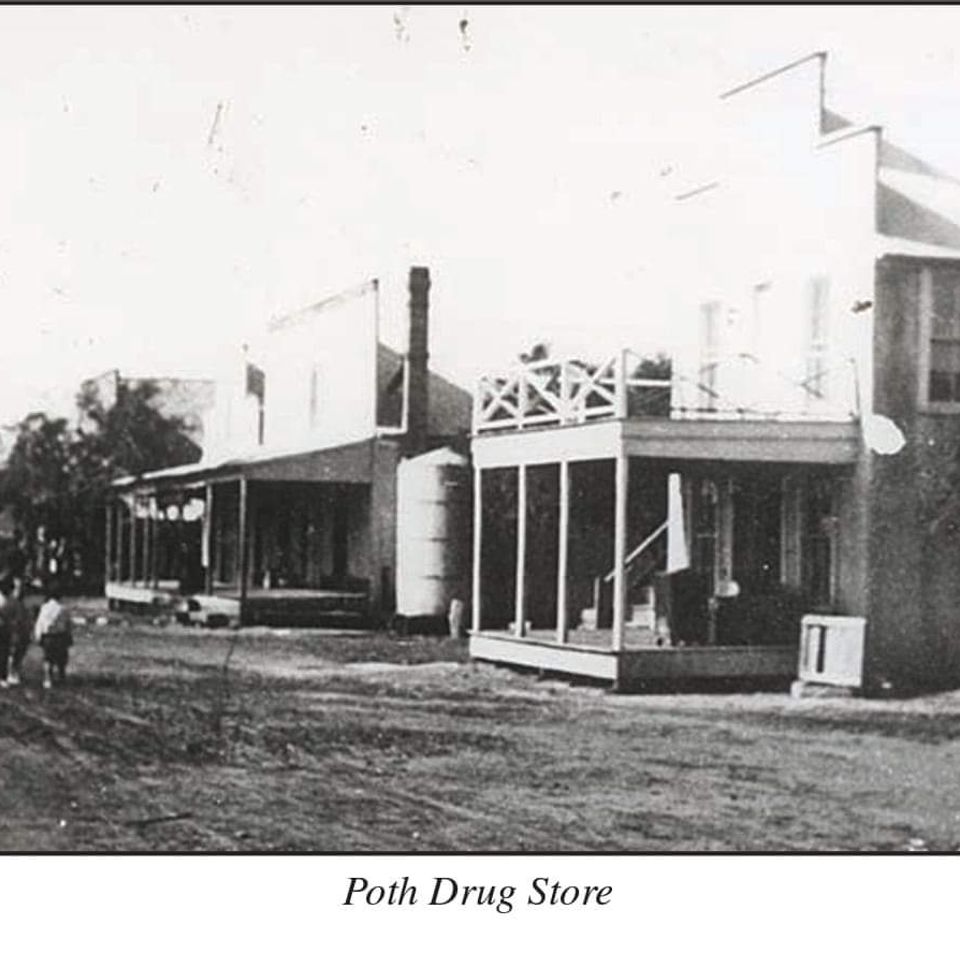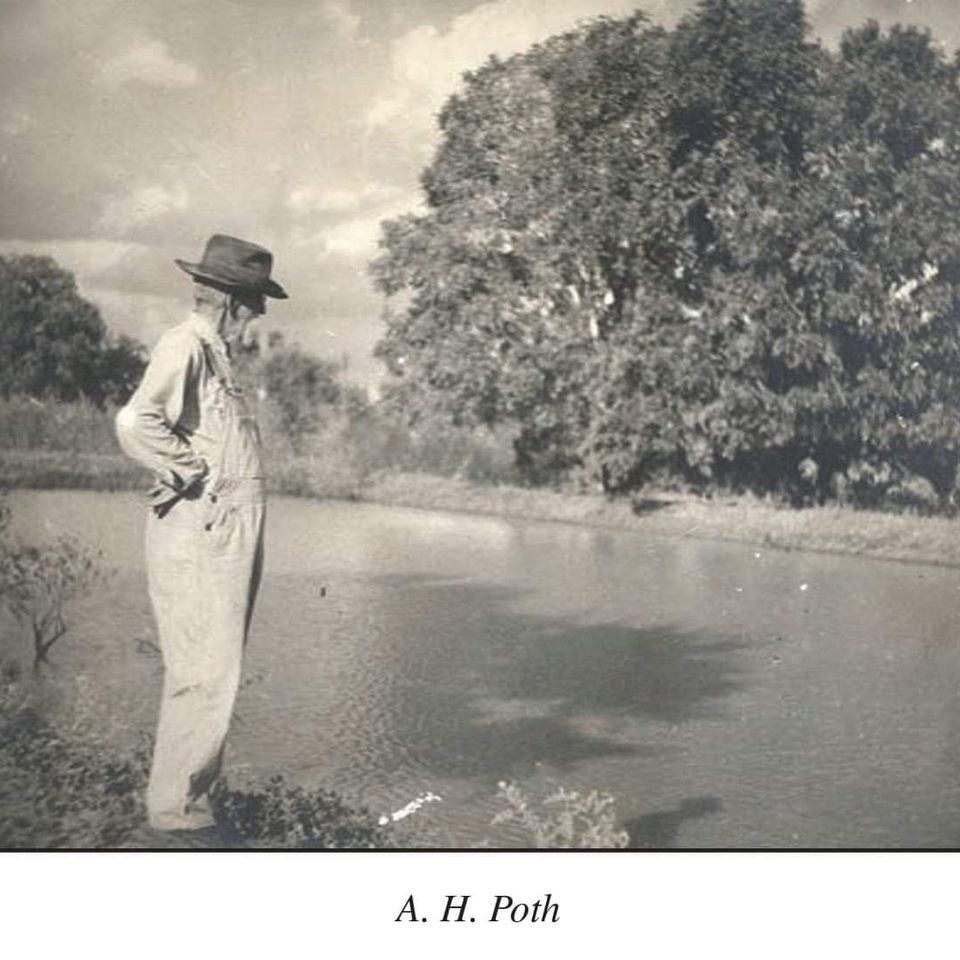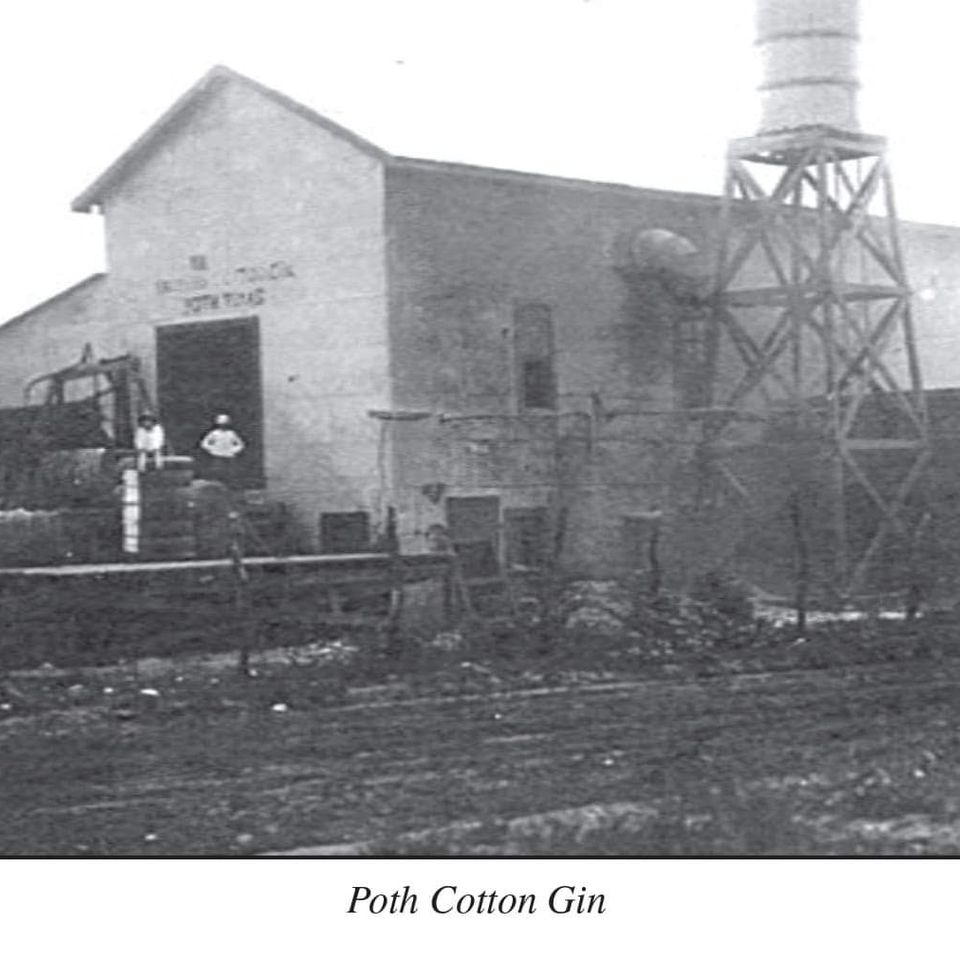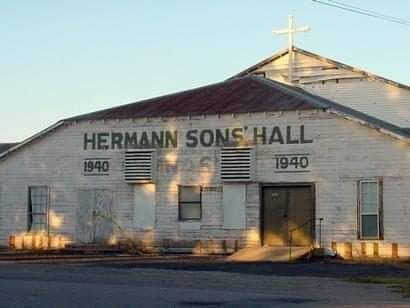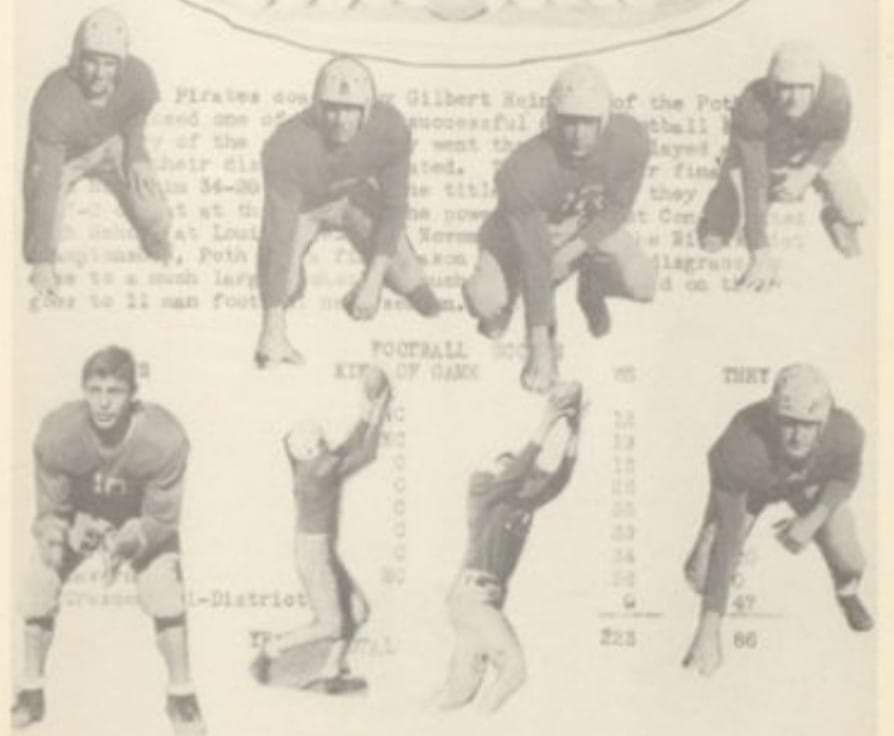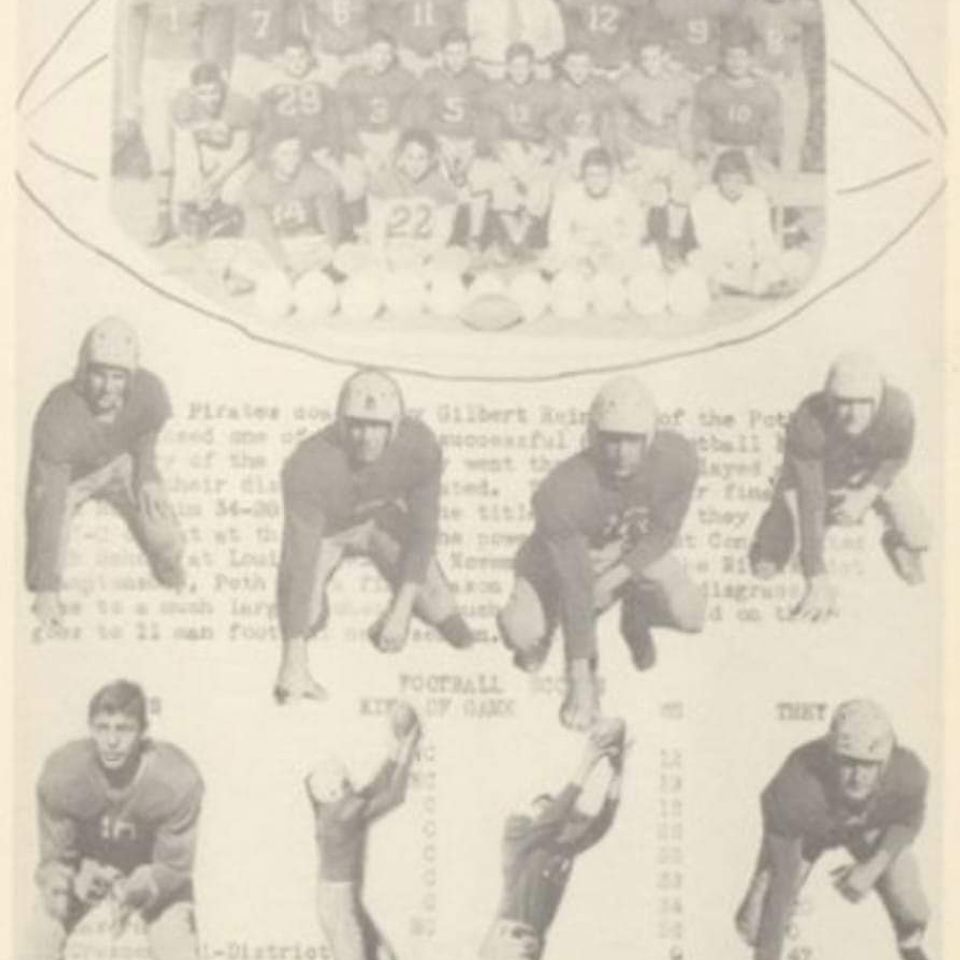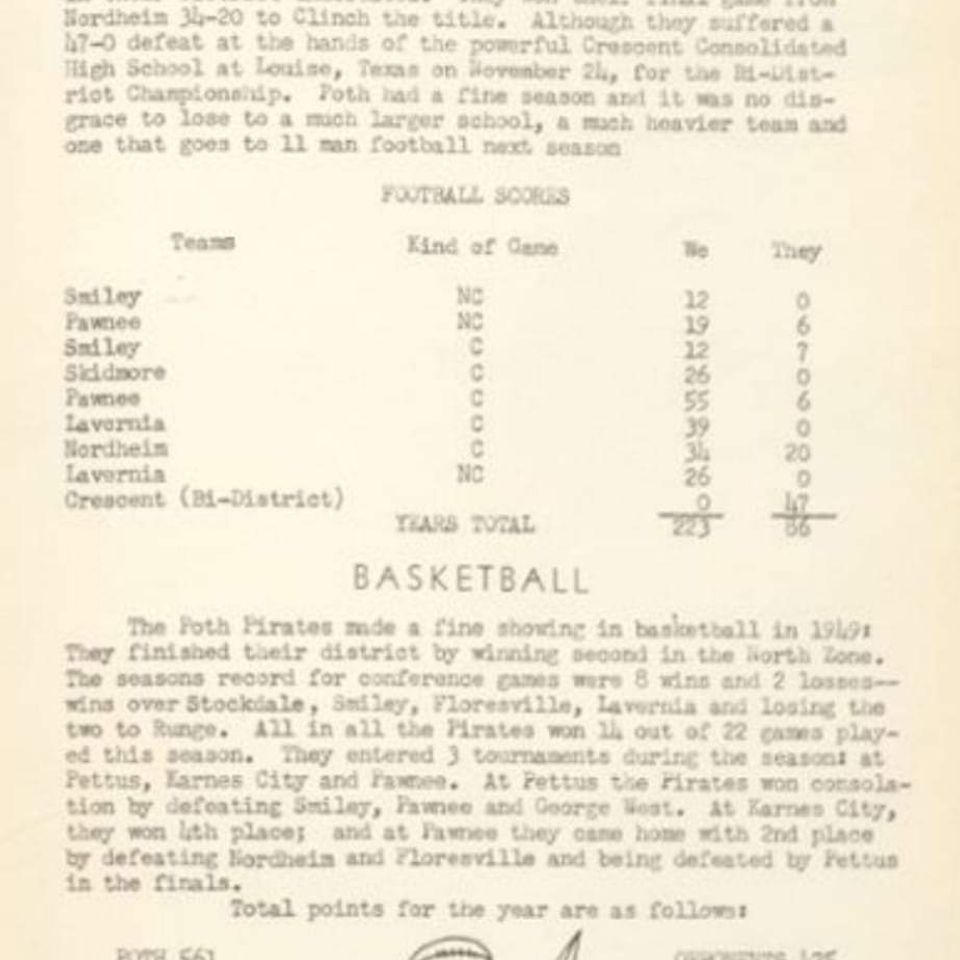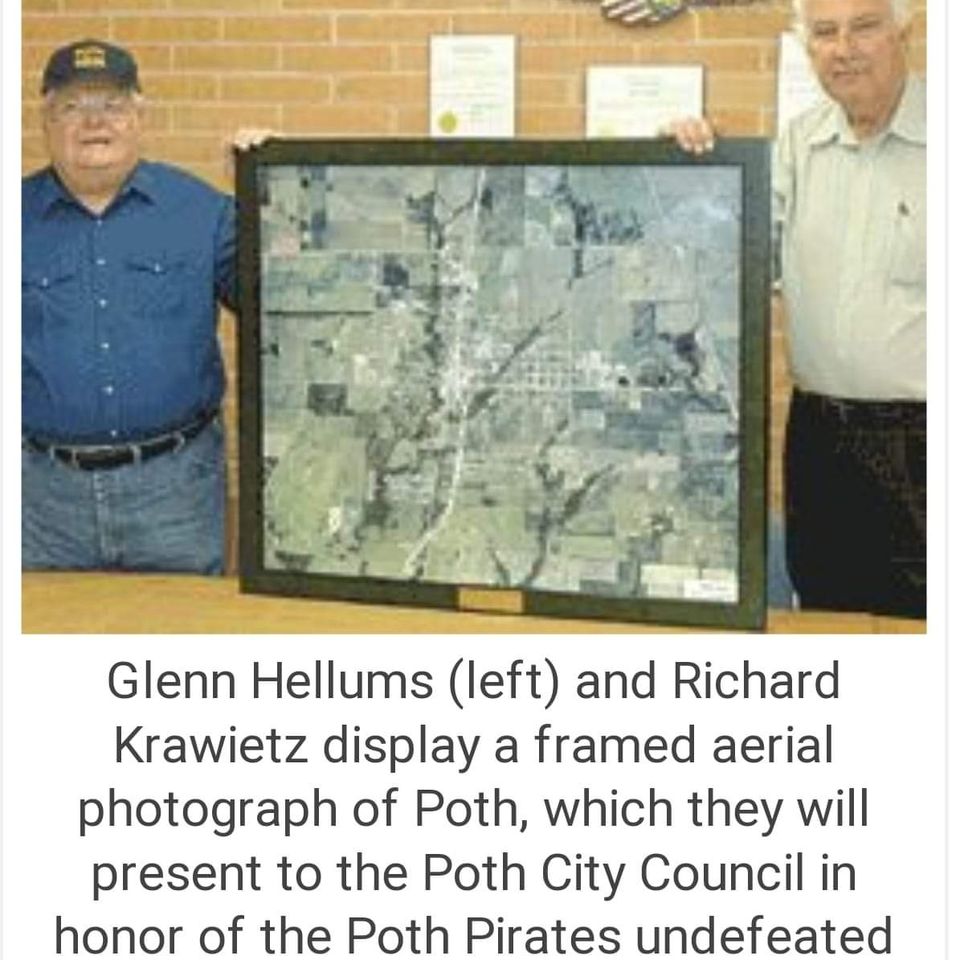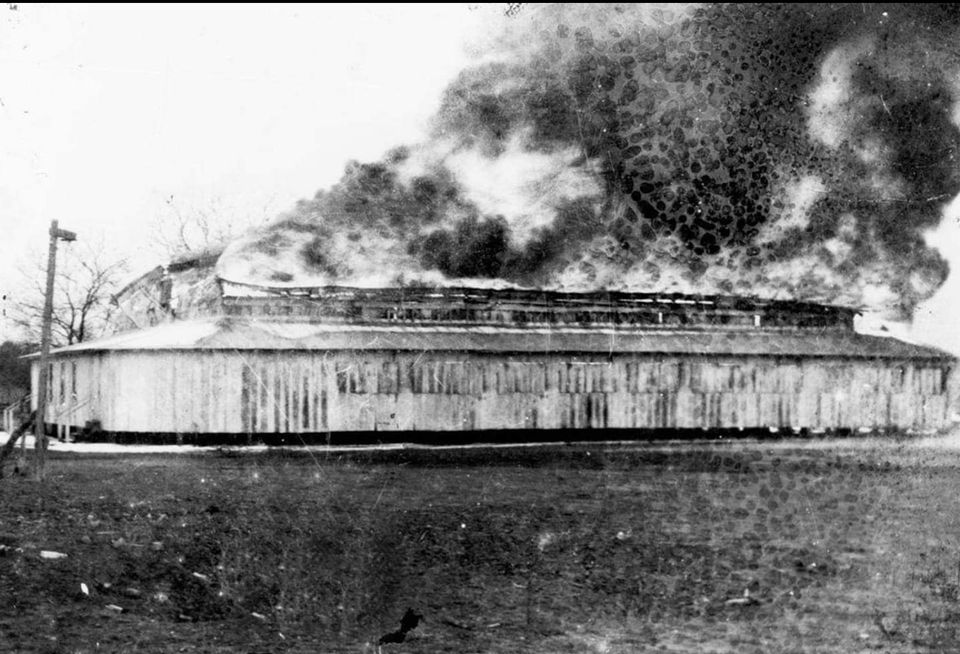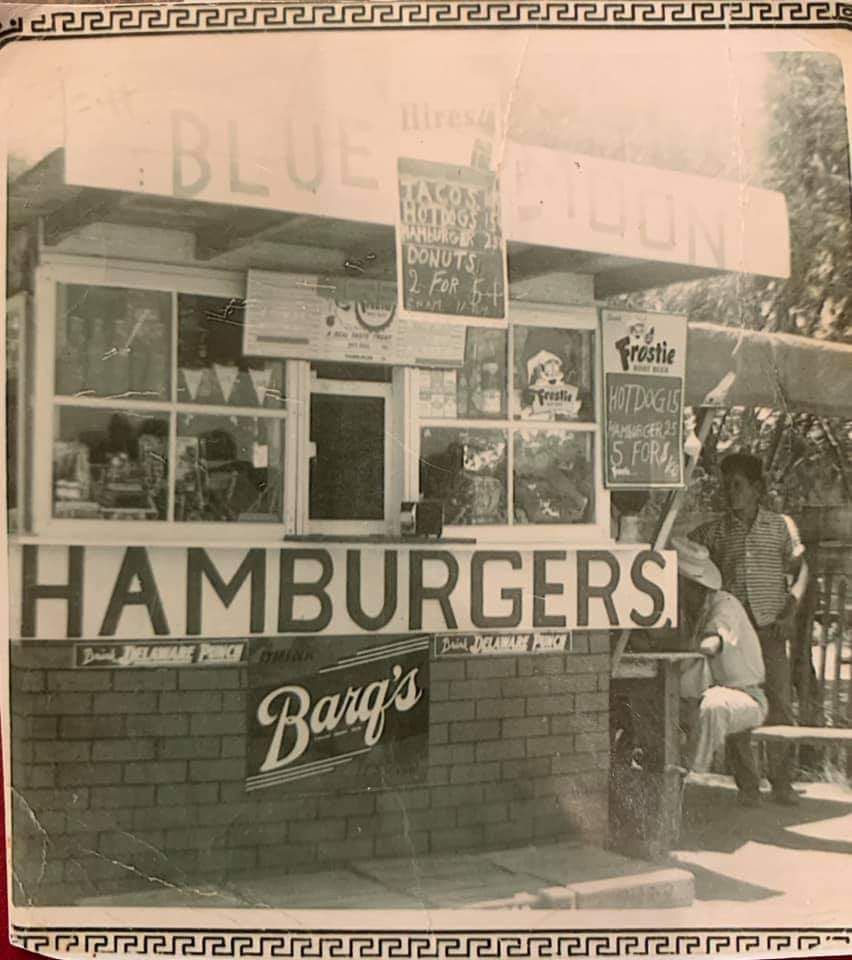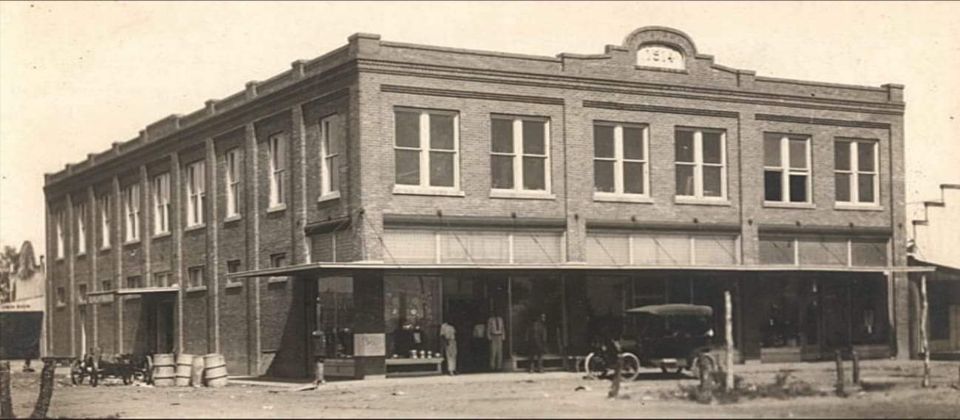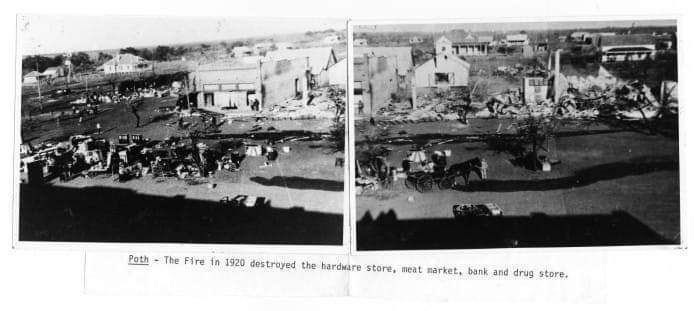Written By Wilson County Historian, Gene Maeckel
Wilson County Sesquicentennial 1860-2010
[Read to gain knowledge about Poth receiving the name "Poth"; major damages caused by the great fires; the building of the plaza ... along with more intriguing history... a written journey by Gene Maeckel. Please read replies as Clay Maeckel has posted a awesome video of 1948 Poth]
POTH WILSON COUNTY TEXAS... The city of Poth is situated in the south-central part of Wilson County on U. S. Highway 181, approximately 35 miles southeast of San Antonio, Texas. The town site lies within the central portion of what was considered the best ranching area in the world by the early Spanish settlers. Poth is located within the boundaries of one of the early ranches owned by Luis Antonio Menchaca, an early Texas patriot and called Rancho de San Francisco.
The Poth Community itself did not develop until after the railroad route of the San Antonio Aransas Pass Railroad was established. Construction of the railroad started in San Antonio in 1884 and initially paralleled the Alamo – La Bahia Road through Bexar and portions of Wilson County. South of Floresville, the route changed to a more southerly route passing through open ranch areas. The railroad construction passed through the future site of Poth in 1886. In addition to the main line, a switch point on the track was constructed in the Poth area named "Marcelina" by the railroad. Its first use was as a location where the train could be flagged to stop to receive or discharge passengers as it was located near the road crossings of the Stockdale – McCoy and Floresville – Falls City roads. This flag stop began to take on new growth with the construction of cattle loading pens. At times cattle would back up over a mile on the road leading to the pens waiting to be loaded. Cattle from the local ranches could now be transported by rail to northern markets rather than being trailed overland, particularly now since much of the range land was being fenced. As a result the name "Marcelina Switch" was given to this flag stop and the cattle loading pens.
This portion of the railroad and the switch was located on the 2500 acre ranch owned by Dr. J. C. Jones of Gonzales, Texas. He, wishing to take advantage of this switch location, had a town site platted in this area by the county surveyor, W. T. Sutherland. To encourage further development in the area he proposed offering 7 ½ acres to any individual or entity to construct and operate a cotton gin within seven months. In addition, Dr. Jones placed other conditions with this offer. He required that such a gin be operated and maintained to at least January 1, 1903 and that a residence be constructed on the site as a home for the operator. A. H. Poth of Hochheim, Texas, the son of a cotton ginner and an expert gin operator, became aware of this offer and decided to take advantage of it. Mr. Poth had recently married. He and his wife loaded all of their possessions into a wagon and a buggy and traveled to Poth with their two dogs.
On their arrival in Poth, there wasn't a house in sight. They pitched a tent under a large oak tree near the local creek for living quarters. Mr. Poth and Dr. Jones agreed on the offer of the free land and its associated conditions. A property deed was transferred on March 18, 1901. The Poths lived in the tent until Mr. Poth completed the construction of a three-room residence. Erection of a gin was immediately started after that and it was completed in time for the 1910 cotton crop. The first bale was ginned on August 10, 1901. A total of 242 bales of cotton were ginned that season.
To encourage further development of the town, Dr. Jones also offered to any individual who would establish a general mercantile store on a block of land adjacent to the central plaza. With this offer was a condition that the store be established and in operation within four months, and remain in business for a minimum of 12 months. July 16, 1901, Dr. J. J. Jones deeded to J. F. Stortz of Karnes County the property on which this enterprise was to be located.
Apparently, J. F. Stortz could not fulfill his obligation to build and operate the store and instead conveyed his property rights to J. V. Marr and Richard Voges for a sum of $200.00. Simultaneously, Dr. Jones conveyed to Richard Voges and J. V. Marr a lot on the other side of the plaza and his reversion interest in the previous sale to Mr. Stortz. By 1902, J. V. Marr and Richard Voges had constructed a wood building at the corner of Stortz and Dilworth Plaza and the first general mercantile business became available to the area residents. Two years later, the store was sold to William Eckel who operated this store until 1915 when it was torn down and replaced with a modern brick structure. During this period other businesses developed around the plaza including a drug store, a grocery store, a meat market and a hardware store.
In 1911, a second gin was built in Poth named Farmer's Cotton Gin. Joe Reznicek and J. W. Manak, both natives of Czechoslovakia, were partners in this operation. This gin was powered by a small two-cylinder internal combustion engine. The partnership was dissolved in 1915 and the assets were acquired by H. W. Hillman and Company. They in turn sold the gin to A. D. Warnken and his sons made several improvements to the plant and had everything in running order prior to the beginning of the ginning season.
In 1914, the Poth Gin was replaced by a new and larger gin erected by C. S. Reynolds who moved to Poth from San Benito. This gin was one of the largest in South Texas and capable of ginning two bales simultaneously with the ability of ginning 140 bales in 12 hours. The gin was powered by a 250 hp steam engine and its brick boiler chimney was a local landmark for many years. In the first years of operation, it turned out over 2700 bales of cotton.
In June 1921 a third ginning plant was preparing for the upcoming cotton season in Poth. It was a large and strictly up – to – date gin plant being constructed by the Farmer's Gin Company, a corporation of 67 stockholders who were all farmers. It was being built across the road from the Reynolds double stand gin and across the railroad tracks from the A. D. Warnken gin. Behind this gin a large cotton storage warehouse was built. This building was available for the storage of cotton bales owned by individual farmers. A practice prevailed at that time for farmers to store their ginned cotton until the price of cotton increased after the peak of the ginning season before it was marketed.
On April 30, 1901, a request was made to the post office department in Washington, D.C., to establish a post office at Kennon City, which was the name suggested for the Marcelina Switch location. Kennon was the maiden name of Dr. Jones' wife. This request was made by R. L. Dilworth, postmaster of Gonzales, in which he also recommended that Arnold H. Poth be named postmaster. New postal regulations at that time required that short names and names of one word be accepted for new post office designations. A copy of the application clearly shows the post office name of Kennon City scratched out and the name of Poth handwritten in its place, thus establishing it as the new name for the post office with A. H. Poth the first assigned postmaster. The location of this new post office was in the front room of the A. H. Poth newly built residence.
August 26, 1901, was a momentous day in the life of Mr. A. H. Poth. On that day a son was born into his family. He was the first child to be born in Poth. On the same day a Mr. A. J. Moore, of the Eureka Telephone Company of San Antonio, came down from San Antonio in the morning to install the first telephone in the community. It was located in the home of A. H. Poth. On the same afternoon, Mr. G. A. Monkhouse, a prominent Wilson County citizen, brought a letter from Washington stating that the postal department had agreed to the establishment of a post office in town to be called Poth and naming Mr. A. H. Poth as postmaster.
The San Antonio and Aransas Pass Railway Company soon realized that the business being generated in the area warranted the need for a depot. A wooden structure was built in 1906 to serve the passenger and freight requirements. As the town began to boom a surprising amount of business was done at the station with it becoming one of the busiest depots on the line. In 1920, the structure was destroyed by a disastrous fire, but the depot was quickly rebuilt. The new one was built of masonry construction and it still exists today.
State legislation required recorded town plats to have a public water supply available for the citizens. In order to satisfy this commitment a water well was dug in the plaza, fitted with a windmill and a large water trough. The quality of the water was so poor that it wasn't suitable for human consumption. The water in the trough did prove to be suitable for horses and mules and served as the watering place for these animals when they were in town. For domestic water, cisterns and gutters were used to capture the rainwater runoff from building roofs. If the rainwater would ever be inadequate during dry times, as happened in the drought of 1917, water would have to be hauled by wagon in barrels filled with water from the San Antonio River west of town.
On January 25, 1904, Dr. Jones died and his will designated his wife, Mary Kennon Jones, as the sole heir. She continued on with the development of Poth. She hired the surveyor W. T. Sutherland to subdivide the town of Poth into blocks and lots and dedicate certain streets and plazas to the public. This plat and dedication of the town of Poth was officially f iled in the Wilson County Deed Records in October 1905.
In 1907, Mary Kennon Jones deeded a portion of Block number 2 to the German Amusement Club conditioned on the following restrictions. First, a hall was to be erected for public gatherings within two years on the site. Second, the operation of the building would be under the control of the German Amusement Club. Third, if a structure was not erected within two years, the property would revert back to Mary Kennon Jones. In 1911 this group of men reorganized the club and became affiliated with the Grand Order of the Hermann Sons of Texas.
In 1907 the first public school was started in Poth in a one room building located near the corner of Stortz and Westmeyer Streets. Sammie Swift was the first schoolteacher whose father Ed Swift was the first Wilson County School Superintendent. She received thirty-five dollars a month for her teaching service, of which seven dollars was used to pay for her room and board at a local residence.
In 1913, the school was relocated to a new and larger facility. This new frame building provided much better lighting and ventilation with additional space to accommodate the growing number of children in the community. It was located on Sutherland Avenue between Titcomb and Dickson Streets. Miss Agnes Striebeck of Floresville was the superintendent when the school opened September 27 with a gratifying number of students.
In 1910 a movement to start a Catholic Parish in Poth was initiated. Catholic men in the area of Poth held a meeting for this purpose and asked the individuals to contribute a subscription for a church. As a result $1400.00 was subscribed. Encouraged by this, several of the men consulted with the Right Reverend Bishop of the Catholic Church in San Antonio concerning the potential of building a Catholic church in Poth. Permission was obtained from the Bishop and land was donated by A. H. Poth for the building of a church and a new church was dedicated in 1912.
In 1913 the first of two banks was established in Poth. The first was organized in February 1913 with a capital stock of $25,000. The first official statement was made to the government on April 4, 1913, with deposits at that time of $10,878.85. By September 1915, deposits were up to $89,903.23. Few banks in towns the size of Poth at this time were able to show better growth.
In 1925 a second bank called the Farmers and Merchants State Bond Bank was established with a capital stock of $30,000. The bank was dissolved in the 1930's due to the poor economic conditions.
In 1914, A. H. Poth constructed a large two-story brick structure adjacent to the central plaza. This building was a real credit to the town and the largest brick structure at that time in the entire county. The building was occupied by the Poth Mercantile Company. The owners of the enterprise were A. H. Poth and his brothers, E. B. Poth and Charlie Poth. The buildinghad a freight elevator to the second floor which was the storeroom and warehouse for the merchandise. In addition, the building had its own electric power plant and water system. The general manager of the operation was E. B. Poth.
In 1916, the Hermann Sons Lodge relocated to a larger site and constructed a much larger hall better adapted for community functions and dances for the increasing area population's use and entertainment. The new hall was regularly scheduled for public dances, occasional political rallies and festivals. The public dances were family affairs with people coming from miles away to dance, meet friends and discuss current affairs, play cards and dominoes. As the evenings passed on, young children would sleep on pallets placed on the floor outside the dancing area.
In 1921, Lutheran services were first held in the public school by the pastor of the Floresville Lutheran Church. Encouraged by the attendance at these services, a temporary organization was created to consider plans for a separate house of worship. In the plat of the town of Poth, Mary Kennon Jones had directed the surveyor, W. T. Sutherland, to set aside a lot near the center of town to be given to the first Protestant denomination that would erect a church on it. The Lutheran group accepted this offer from Mary Kennon Jones and constructed a small chapel on this site in 1922.
Poth is located in an area where the soil is mainly rich and mellow sandy loam, free from alkali and easily worked. With its mild climate and drought-resisting qualities, it is well-suited for diversified farming. In addition irrigated farming from the San Antonio River and deep wells into the Carrizo Aquifer is practiced to supplement the natural rainfall. In the late 1800's and early 1900's cotton and corn were the leading staple crops. The demise of cotton because of the boll weevil caused farming to change to other crops, such as onions, black-eyed peas, sweet corn, flax, peanuts and grains. These crops were harvested and shipped by rail to different parts of the United States. To accommodate the preparation and packaging of these crops, large shipping sheds were constructed near the depot along the railroad sidings.
The central plaza in Poth was dedicated to the town in 1904 by Mary Kennon Jones for the development of the community. The deed specified that the plaza be called Dilworth Plaza and be for the use of the public as well as the purchasers of the town lots and blocks.
Initially, the plaza area was only an open space used by local citizens and merchants as a place to leave their horses and wagons while conducting business in town.
In the 1930's during the WPA era the plaza was developed into a city park. The central area was separated from the streets by a rock-lined moat on each side and in the front. Water from the new city water supply system was directed down each side and exited in the front into the local creek. The central area was planted in grass with a border of crape myrtle shrubbery along the edges. In the center was a flagpole for the national flag.
In the 1950's the plaza was reconstructed into a large paved parking area. Commercial activity in the central business area had grown so much since the end of World War II, plus the large growth in the numbers of individual automotive vehicles, that adequate parking space in town was not available. To separate the plaza into two large parking areas, it was divided down the center with a pipe and chain barrier. The f lagpole from the earlier plaza was retained and a pipe structure for supporting the city fire alarm was constructed at the east end of the plaza. This pipe support structure was also used for drying fire hoses after each use by the volunteer fire department.
In the 1980's the plaza was again rebuilt. This time a brick walkway was created down the central part of the plaza. The walkway is bordered by landscaping and parking on each side with a gazebo in the center. At the eastern end of the plaza are six different flags which have flown over Texas. The plaza today is a very attractive site resulting in many positive comments from the visitors who pass through the area.
In 1920, three weeks after the depot fire, another large fire destroyed many of the business establishments facing the central plaza. Businesses destroyed by this fire included a grocery store, a drug store, the bank, a hardware store and a meat market. Fire struck again in 1921 when a two story hotel on the San Antonio A. H. Poth roadway was completely destroyed in addition to claiming the life of one individual.
In 1920, after the several disastrous fires in the business area, the young men of the community organized a volunteer f ire department. Their first piece of firefighting equipment was a twowheel cart with a hand pump and hoses, which were handdrawn by the volunteers.
During the early 1930's the town continued to grow and business flourished. The U. S. Government was granting funds to incorporated cities to assist in developing the city infrastructure such as sewer, water and streets. To take advantage of these funds the town had to become incorporated. The citizens began discussing the merits of incorporation and requested an election to be held. The desire to incorporate passed and on October 18, 1933, the town officially became an incorporated city. With the help of the U. S. Government assistance, a number of modern civic improvements were completed. This included a public sewage system, a city waterworks plant, an artesian water well and water distribution system. The water from the new well was of good quality and suitable for human consumption even though it was very warm and had a strong sulfur smell.
In January of 1940, another major fire in Poth destroyed the Hermann Sons Lodge Hall. By November of that year another new and larger structure was built. It was built to be a multifunctional facility. In cooperation with the public schools it served as a gymnasium for their athletic programs. The large floor area also served as a dance area for regularly scheduled dances. People from miles around would attend to hear and dance to well-known musical groups. It was also the scene each year of all-day church and community picnics and barbeques. These events served noon and evening meals with meats barbequed over large open pits under nearby oak trees. Entertainment such as bingo, auctions, music, children's games and general socializing was provided throughout the day.
The town has continued to grow during the ensuing years adapting to changing economic conditions. With adequate, locally grown grains available for feeding poultry and cattle, a turkey dressing plant and two meat processing plants were established during the years. Today, a large feed plant exists which custom mixes feed for cattle, horses, poultry and other farm animals. In addition it custom mixes specialty feeds for certain wild game animals on private hunting ranges.
The growth in the area today is in the building of new residential housing. This new housing is being built to satisfy the housing needs of the increasing number of individuals living in the Poth area who commute daily to San Antonio for employment.
